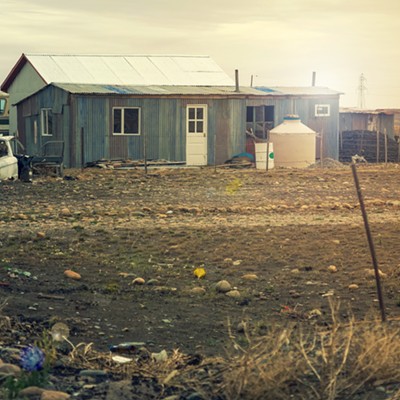It's a sad reality in education and interscholastic athletics that the further away one gets from face-to-face interaction with young people on a regular basis, the more likely it is that an administrator will view student-athletes in terms of numbers rather than as human beings with hopes and dreams and goals.
Rarely has this been more evident than in the case of the Arizona Interscholastic Association (AIA), an organization whose sole purpose is to serve Arizona's high school athletes, yet instead has devolved into a Phoenix-centric clique with closed ranks and closed minds—an organization that is apparently far more interested in making life easier for its executives than in making things better for the student-athletes throughout the state.
This past summer, I wrote an article about how the AIA—the body that is supposed to govern high school athletics in Arizona—had come to the conclusion that too many kids were experiencing success, and that something had to be done to put an end to that. According to a plan developed in secret, rushed through without discussion and passed in an even-more-draconian form than had been threatened in the first place, Arizona prep student athletes would see their chances of achieving a lifetime goal—a trip to the state tournament—diminished by as much as 90 percent in some sports. (See "Tales From the Outskirts," July 22.) Despite a chorus of protests from coaches, athletes, parents and school administrators, the AIA has forged ahead with its "reorganization" plan, breaking its word on several fronts and dashing most kids' chances of ever participating in a state tournament.
I'm not one of those let's-give-every-kid-a-trophy people; I never have been, not as a player, nor as a coach. But neither do I think it's fair or right to implement a plan that even a casual observer would recognize as preventing entire groups of people and schools from ever getting within shouting range of postseason play. The AIA is telling kids that their schools aren't big enough or their sports aren't important enough to be given serious consideration.
With a few exceptions for sports like badminton or boys' volleyball, Arizona's high schools are currently broken into seven classifications, based almost entirely on enrollment. When initially trying to explain their plan, members of the AIA Board claimed that no other state came close to having that many different classes. Apparently unaware of that Internet thing, they could have checked and found that a small state like Arkansas has seven. Even among the states that touch Arizona, Nevada and Utah have five; New Mexico has six; and Colorado has seven. Starting next school year, Arizona (which is larger in population than any of the aforementioned states) will have only four in basketball. And then, to manually insert salt-and-vinegar chips into the open wound after having slashed the number of classifications almost in half, the AIA will also cut back on the number of schools that will advance to state tournaments in each of the new divisions. It is elitist nonsense being packaged as streamlining.
It is a cliché—but, like many clichés, one born from fact—in police procedurals that the perpetrator of the ill deed is most likely the person who will benefit most from the act. Certainly, those who will benefit most from severely cutting back on the number of state tournaments, and the participants therein, are those whose job it is to administer such tournaments. If you only have to run four tournaments instead of seven, and you still get paid the same amount, what's not to like?
In their meager defense, no one in the AIA has been so boldly dishonest as to suggest that anything in the reorganization plan benefits in any way, shape or form the student-athletes for whom they are supposed to be looking out. They have, however, been dishonest about a good many other things. After telling member schools what was coming (and neither soliciting nor accepting any feedback), AIA board members pulled a switcheroo and slashed the participation numbers even further in their final vote. They claimed that the plan had widespread support, when almost no such support exists. (Only the schools at the top of each new division support the move, as they will benefit from the competitive imbalance.) And the board members based their mishmash of a plan on methods cherry-picked from a variety of different states, apparently never giving any consideration to the thought that perhaps Arizona was already doing things right.
There are undoubtedly many readers who couldn't care less about high school sports and the tens of thousands of Arizona's young people who pour their sweat and dreams into the pursuit of athletic excellence. So, let's look at it this way: The AIA is the classic example of what happens when an insular group of unelected officials is given broad power. There is consolidation, followed by pontification, and then elimination. By the time they're done, most of the rest of us are done for.







